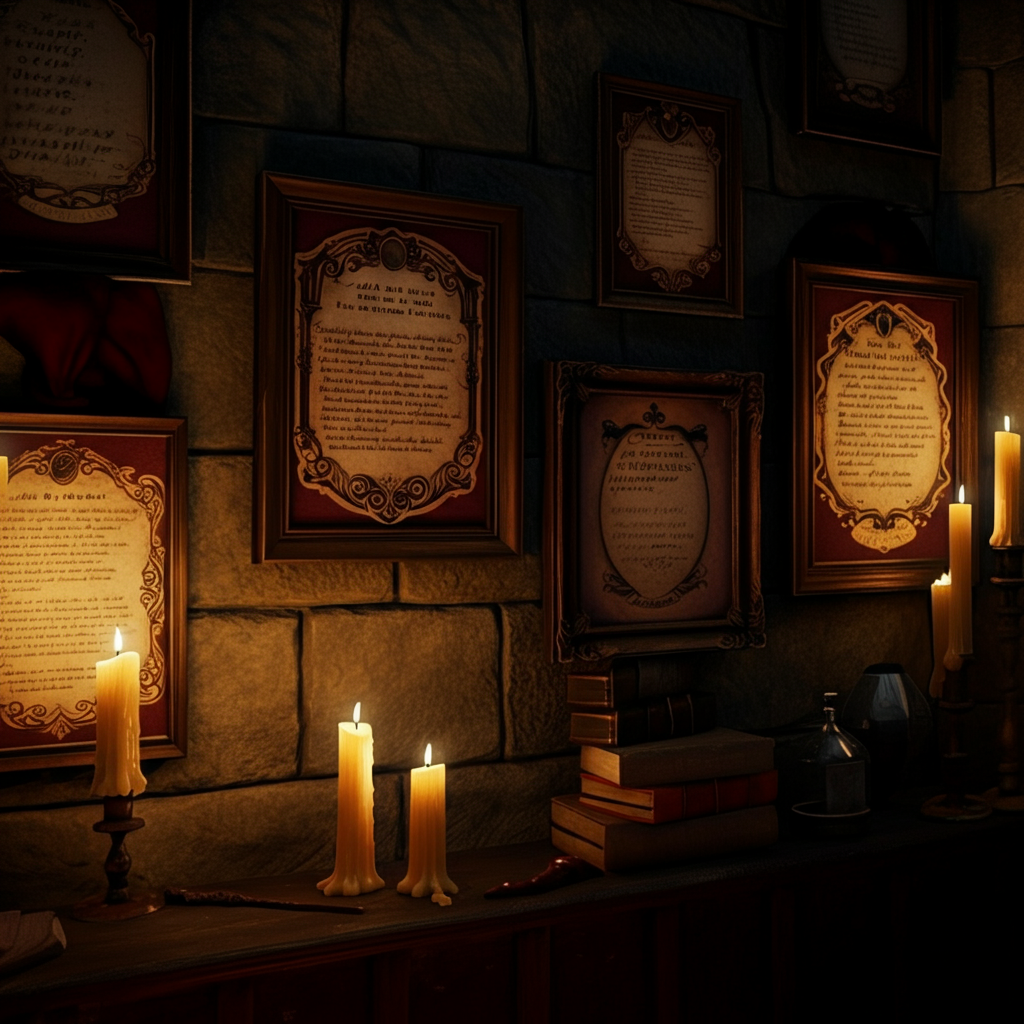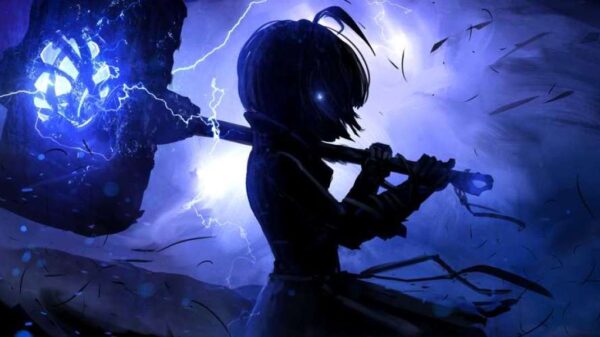The Harry Potter series is a phenomenon that has captured the hearts and minds of readers and viewers across generations. Among the countless magical elements, one memorable aspect in Harry Potter and the Order of the Phoenix is the notorious Educational Decrees issued by Hogwarts’ formidable High Inquisitor, Dolores Umbridge. Displayed prominently on the walls of the school, these proclamations not only restricted student freedoms but also set a somber tone reflecting the more significant unrest in the Wizarding World.
But what were these proclamations, and why are they significant in the series? How did they inspire fan creativity, with fans now framing replicas of these infamous decrees as collectibles? Let’s unravel this magical thread.
What Are the Educational Decrees in Harry Potter?
The Educational Decrees were a series of rules imposed on Hogwarts School of Witchcraft and Wizardry by the Ministry of Magic. At their core, these decrees served as control tools rather than measures for better education. Acting through Dolores Umbridge, the Ministry issued these decrees to suppress anti-Ministry sentiment and stifle rebellion against its authority.
Some notable decrees include:
- Educational Decree #23: This decree appointed Dolores Umbridge, the Hogwarts High Inquisitor, granting her overriding authority within the school.
- Educational Decree #24: Unless Umbridge explicitly approved it, it banned all student organizations, including study groups like Dumbledore’s Army.
- Educational Decree #27: Prohibited the distribution of any materials deemed subversive to Umbridge’s rule or the Ministry’s agenda.
These decrees disrupted the normal functioning of the school, pitted students against authority figures, and amplified the conflict between the Ministry and Harry Potter’s supporters. J.K. Rowling beautifully wove these proclamations into the narrative to symbolically highlight themes of oppression and rebellion—a reflection of historical and fictional authoritarianism.
The Power and Limitations of Educational Proclamations
Umbridge’s decrees drew sharp criticism within the school. Students protested Fred and George Weasley created mayhem, and even the professors resisted in their ways. These decrees were more than mere inconveniences; they became symbols of desperation from a Ministry clinging to an illusion of control. Despite their harshness, they backfired, ultimately uniting Hogwarts students and staff in their resistance.
Through these rules, J.K. Rowling illustrated how authoritarian regimes seek to dominate institutions and minds while demonstrating the resilience required to combat oppression. For fans, these proclamations introduced multi-dimensional storytelling—making them a fascinating element of the Wizarding World to analyze.
The Inspiration Behind Spell Names and Rowling’s Genius
To fully appreciate the ties of educational proclamations to magical literacy, we must also explore another enchanting aspect of Rowling’s world—spell names. These arcs derive depth and creativity from Rowling’s rich academic background.
Rowling’s classes in Classics and French at the University of Exeter explain the linguistic roots of the spell names of spell names. Latin has been pivotal in shaping spell creation, allowing readers to establish intuitive connections between a spell’s name and function. Here are some examples:
- Accio (Latin for “I summon”) calls objects toward the caster.
- Lumos (based on “lumen,” light) conjures light from a wand.
- Sectumsempra (“sectum” meaning “to cut,” and “sempra” implying “always”) creates a cutting curse.
By grounding spells in Latin and French, Rowling adds authenticity and sophistication to her magical universe, lending it a sense of timelessness. This linguistic brilliance ties into the themes in her decrees—how language is weaponized or used for control—and brings magic closer to readers who grapple with real-world institutions.
Educational Proclamations Framed: A Testament to Harry Potter Fandom
The love of Potter in the fan community extends beyond reading books and watching films. Creative fans have taken the elements of the series, like the Educational Proclamations, and infused them into various art forms and collectibles. Framed reproductions of these proclamations are now a popular addition to home decor for Harry Potter enthusiasts.
Why are these framed items so popular?
Storytelling Through Decor
Fans enjoy showcasing essential narrative elements of the Wizarding World. Framed Educational Proclamations transport viewers to iconic rooms at Hogwarts, sparking storytelling conversations.
Symbolism of Resistance
For many fans, hanging these framed decrees symbolizes challenging oppressive authority—a theme deeply ingrained in the series.
Craftsmanship and Nostalgia
Artists bring these proclamations to life with stunning attention to detail, ensuring an authentic look. Many items also include witty disclaimers or creative designs that add a playful twist.
Merchandise sparked by the Educational Decrees ranges from wall art and posters to customizable rule sets where fans humorously write their interpretations of Umbridge’s tyranny. Platforms like Etsy and local conventions remain hotspots for such creative collectibles.
Key Takeaways and Why It Matters
Educational Proclamations Harry Potter Framed: The Educational Decrees introduced in Harry Potter and the Order of the Phoenix transcend the rules hanging on Hogwarts’ walls. They encapsulate critical themes of rebellion, critical thinking, and resisting unjust authority—all while becoming objects of fascination for fans of the series. Combined with the depth of Rowling’s linguistic spellwork, these proclamations contribute heavily to the immense world-building of the franchise.
For fans looking to deepen their Harry Potter experience, engaging with framed proclamations is a whimsical way to celebrate this magical series. Which decree holds the most significance for you? Please share your favorites (or any creative takes) with us!
Frequently Asked Questions (FAQs)
1. What were the Educational Decrees in Harry Potter and the Order of the Phoenix?
The Educational Decrees were restrictive rules implemented at Hogwarts by Dolores Umbridge on behalf of the Ministry of Magic. They aimed to control students and staff while stifling rebellion against Voldemort’s return.
2. Who created the Educational Proclamations in the Wizarding World?
The Ministry of Magic issued the proclamations enforced by Dolores Umbridge when she served as Hogwarts High Inquisitor.
3. Why does J.K. Rowling use Latin to spell names?
Rowling’s background in Classics influenced her use of Latin to name spells. This adds depth, authenticity, and intuitive understanding for readers exploring the magical lexicon.
4. Where can I find framed Educational Proclamations?
Many online platforms like Etsy and gift stores sell framed recreations of the decrees featured in the movies. You can also find customizable options for personal touches.
5. How do Educational Proclamations reflect real-world themes?
The proclamations explore themes of oppression, rebellion, and institutional authority. They symbolize societal struggles against injustice and stand as timeless metaphors for activism.











